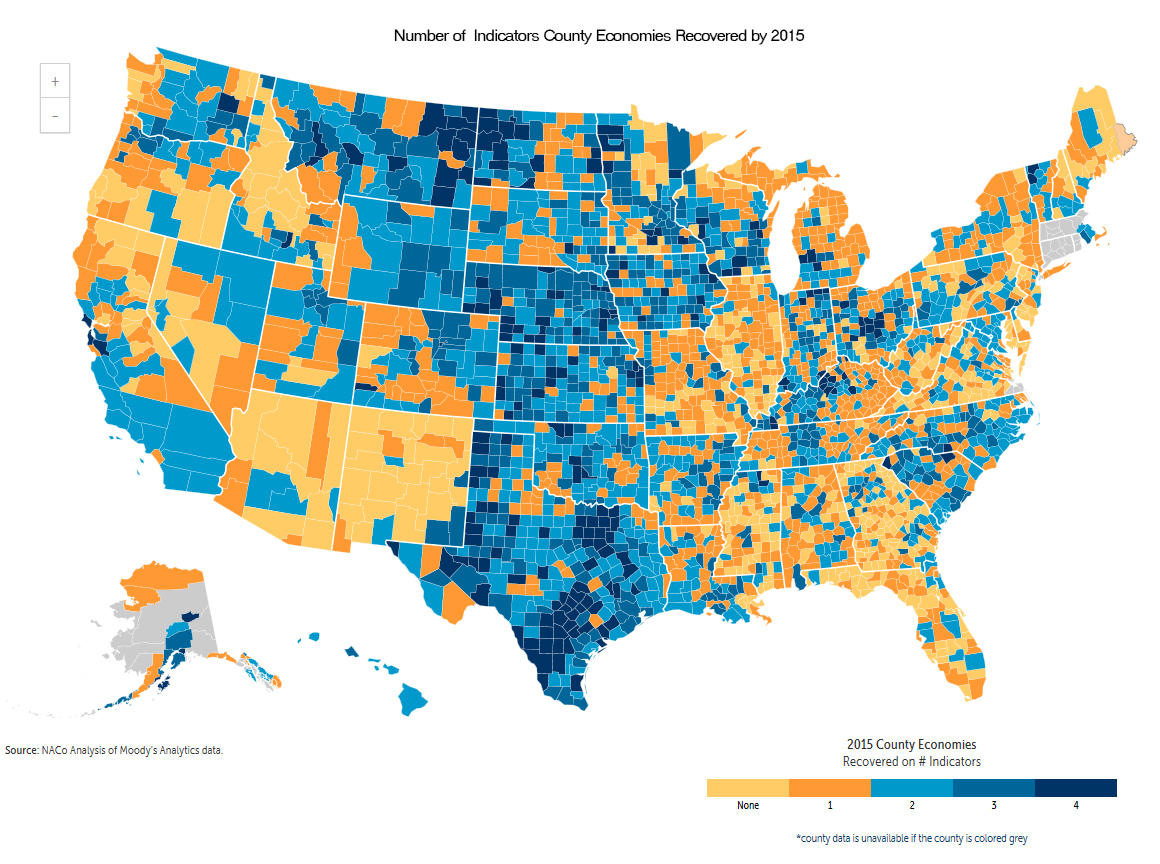 President Obama insists the U.S. economy has bounced back, but a new study shows economic recovery hasn’t happened where most Americans live. Fewer than 1 in 10 U.S. counties have fully recovered their 2009 pre-recession economies.
President Obama insists the U.S. economy has bounced back, but a new study shows economic recovery hasn’t happened where most Americans live. Fewer than 1 in 10 U.S. counties have fully recovered their 2009 pre-recession economies.
NAS compared each U.S. county’s 2009 and 2015 economy in four areas: total employment (jobs), unemployment rate, size of economy (GDP), and home values.
- 7 percent of U.S. counties (214 of 3,069 U.S. counties) have fully rebounded in all four areas to their 2009 pre-recession economies;
- 93 percent (2,855 counties) lag behind their pre-recession economic levels in one or more of four measures; and
- 27 states (a majority) have yet to see even one county with full recovery in all four measures.
While 2015 was better than 2014 in terms of recovery, the U.S. economy has a long way to go to get back on its feet.
The data reveals that the economic recovery accelerated in 2015, especially on unemployment rates and home prices. A number of large county economies made significant strides, fully recovering across all four indicators for the first time. Growth continued in 2015.
Yet, most county economies still have not recovered to their pre-recession levels on jobs and unemployment, and economic output growth was less pronounced. Since 2009, the recovery has created an uneven geography of opportunity, with some county economies witnessing rising wages and productivity, while others saw wages failing to keep pace with productivity gains. These opportunities and challenges in the U.S. economy on the ground show the continued need for a strong local-state-federal partnership in securing a strong economy.

